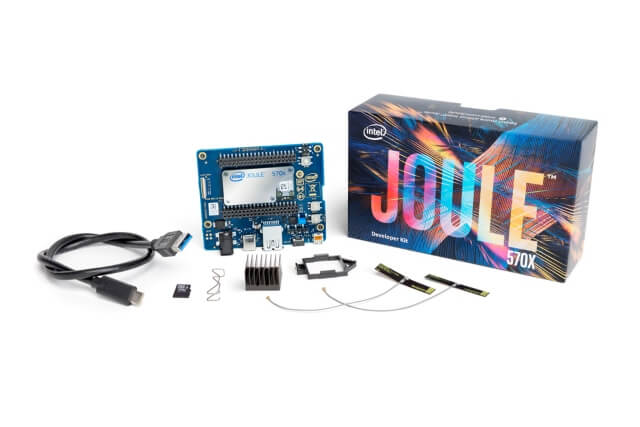Intel came out with some details about the two versions of Joule at annual Intel Developer Forum.
Leading technologists, inventors, and developers have met at the 2016 Intel Developer Forum to discuss the development of such key growth areas as virtual reality, autonomous driving, machine learning and 5G.
The presentation of Joule, the latest in Intel’s Internet of Things-focused product kits, became one of the most exciting announcements at the conference that took place on August 16-18 in San Francisco.
Intel aims to further augment the existing lineup of kits. Joule is intended to offer a much higher performance part based on the latest generations of Intel’s technologies. While the Edison module is often compared to a postage stamp by size, Joule is only a bit larger.
Intel hasn’t revealed all the details about Joule so far so power consumption information is not available yet. However, experts admit that knowing the higher performance goals for the kit allows to state that consumption will be higher than that of Edison.
Intel offers two versions of the Joule board – both use the same SoC, but have different clockspeeds and memory. Joule 570X is more powerful, with 4GB of LPDDR4 memory and a 16GB eMMC NAND module for non-volatile storage. The model uses what Intel is calling a Atom T5700, which is a quad core Goldmont Atom configuration with a base clock of 1.7GHz and can turbo to 2.4GHz.
The second version, the Joule 550X, drops the quad core Atom to 1.5GHz with no turbo, and has 3GB of LPDDR4 memory along with 8GB of NAND.
Both Joule boards offered by Intel have the same I/O connectivity. On the wireless side, this is composed of a radio supporting Bluetooth 4.1 and 802.11ac. And on the wired side, USB 3.0 is supported, along with the vast collection of GPIOs, UARTs, and MIPI’s camera (CSI) and display (DSI) interfaces.
According to Intel, Joule will support a few different OSes. Special hardware that Intel is calling Reference Linux OS for IoT has been developed. It is supported by a new Linux distribution. Cannonical’s “Snappy” Ubuntu Core is also supported. The support for Microsoft’s Windows 10 IoT Core is provided for developers who need Windows interoperability.
VentureBeat admits that Intel is aiming Joule at a higher performance class of use cases: “Ultimately as a maker kit it’s a bit of an “if you build it” situation – it’s up to developers to figure out what to do with it – but Intel sees it as being useful for drones, AR/VR, robotics, and for the first time in one of their IoT products, computer vision. While we don’t have a ton of hard details on the underlying iGPU, it is powerful enough for certain CV tasks, and it supports both 4K video capture and display. It also supports Intel’s RealSense camera, giving developers the option of using the underlying depth sensing capabilities for improved vision/analysis”.
Intel hasn’t revealed the prices for Joule 570X and Joule 550X. However, Intel has already started selling one of the Joule SKUs. The Joule 570X development kit is available now at IDF for $369. It will be sold through Intel’s partners next month.
